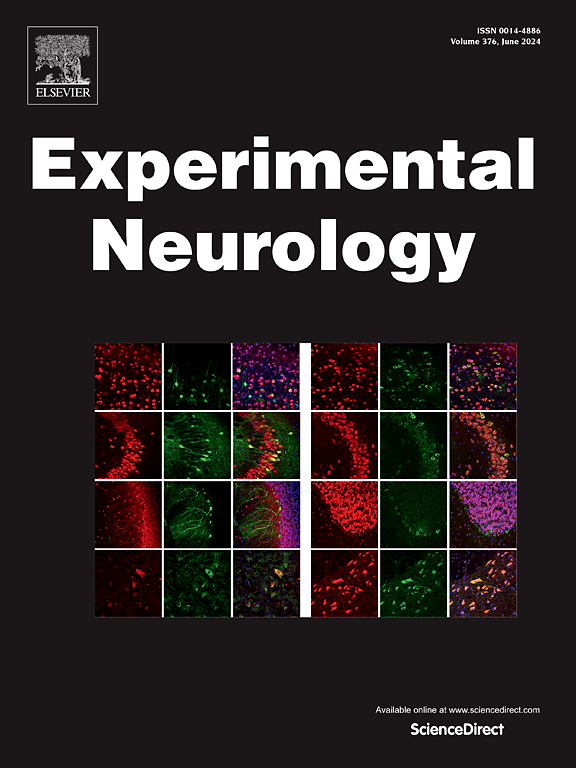Neurochemical alterations in the cerebellum of Friedreich's Ataxia mouse models
IF 4.6
2区 医学
Q1 NEUROSCIENCES
引用次数: 0
Abstract
Friedreich ataxia (FRDA) is an autosomal recessive neurodegenerative disorder caused by frataxin deficiency. Neurological deficits remain the ubiquitous feature of FRDA and include progressive ataxia and dysarthria, both of which are controlled to a large degree by the cerebellum. The precise impact of frataxin deficiency on the cerebellum including Purkinje cells remains unclear. In the present work, we examined the biochemical and structural properties of the cerebellum and Purkinje cells in the doxycycline-inducible (FRDAkd) and the Knock-in/Knockout (KIKO) mouse models of FRDA. Acute systemic knockdown of frataxin in FRDAkd mice and chronic frataxin deficiency in KIKO leads to a significant decrease in levels of AMPA receptors, particularly GluR2, and an increase in glial glutamate transporters. Significant astroglial accumulation occurred in KIKO cerebellum but not in FRDAkd mice. Purkinje cell dendritic arbors in the molecular layer did not change compared to wildtype in either model. The Purkinje cell postsynaptic receptor NMDAR1 significantly decreased only in the FRDAkd cerebellum while other NMDA receptor subunits, largely found in non-Purkinje cells, did not change. Overall, we observed dysregulated levels of glutamate receptors and transporters in the KIKO and FRDAkd mice models of Friedreich ataxia, suggesting the importance of frataxin in maintaining Purkinje cells and cerebellar integrity along with synaptic properties. These results point to conserved but not identical synaptic features between the models that may represent markers or conceivably targets in human FRDA.
求助全文
约1分钟内获得全文
求助全文
来源期刊

Experimental Neurology
医学-神经科学
CiteScore
10.10
自引率
3.80%
发文量
258
审稿时长
42 days
期刊介绍:
Experimental Neurology, a Journal of Neuroscience Research, publishes original research in neuroscience with a particular emphasis on novel findings in neural development, regeneration, plasticity and transplantation. The journal has focused on research concerning basic mechanisms underlying neurological disorders.
 求助内容:
求助内容: 应助结果提醒方式:
应助结果提醒方式:


